JKPSC KAS Mains 2021 Geography Paper 1:
Please read each of the following instructions carefully before attempting the paper.
(i) There are eight questions divided in two Sections and printed in English. Candidate has to attempt Five questions in All. Questions No. 1 and 5 are compulsory and out of the remaining, any Three are to be attempted choosing at least One question from each Section. The number of marks carried by a Question/Part is indicated against it. Answers must be written in English in Question-Cum-Answer (QCA) Booklet in the space provided.
(ii) Your answer should be precise and coherent.
(iii) If you encounter any typographical error, please read it as it appears in the text book.
(iv) Candidates are in their own interest advised to go through the general instructions on the back side of the title page of the Answer Script for strict adherence.
(v) No continuation sheets shall be provided to any candidate under any circumstances.
(vi) No blank page be left in between answer to various questions.
SECTION- A
1. Answer the following questions in about 150 words each: (5 x 10 = 50)
(a) Explain Earth’s Magnetic Field. Do you agree with the scientific input that it has shown signs of weakness and how it is going to impact earth and human beings. (10)
(b) Evaluate the state of atmospheric stability and instability and its effect on air quality. (10)
(c) Why sea level is changing and evaluate its short-term and long-term implications. (10)
(d) Evaluate the role of System Analysis in Geography. (10)
(e) Discuss the properties and characteristics of Tropical Cyclone. (10)
2. (a) Explain the characteristics of channel morphology and how far it is important for the health of the river. (20)
(b) Evaluate climate change and highlight its consequences on the urban health. (15)
(c) Critically examine the difference between Plate Tectonics and Continental Drift. (15)
3. (a) With increasing social and economic compulsion of life the population growth rate is declining. Evaluate your answer in the light of “Lying Flat” movement in China. (20)
(b) Evaluate the role of trading blocks in understanding trading patterns in the world. (15)
(c) Highlight the urban threats and probable solutions for the sustainable future of the cities. (15)
4. (a) Explain “Urban Heat Island”. Does it have any consequences on natural and human health. (20)
(b) Evaluate major developments in the International Laws and their relevance in protection of marine environment. (15)
(c) Highlight the major characteristic features of “Gene Pool Centres” and their importance in genetic diversity. (15)
SECTION- B
5. Answer the following question in 150 words. (5 x 10 = 50)
(a) What are the main principles of EIA and discuss the significance of EIA in various development projects. (10)
(b) Evaluate Sustainable Development Goal No-11 and highlight how it can achieve sustainability of cities in the world. (10)
(c) Evaluate the mountain building process and highlight its relationship with recent viewpoints. (10)
(d) Evaluate climate change and its related human adaptation and adjustments in the world. (10)
(e) Critically analyse the Heartland and Rimland theory and evaluate that why Rimland is more important than Heartland. (10)
6. (a) What is coral bleaching. Explain mass bleaching events and probable impact in different oceans. (20)
(b) Explain genesis of soils and how they differ in different ecological conditions. (15)
(c) What are the fundamental concepts and principles of ecology in terms of eco-system. (15)
7. (a) What is areal differentiation and highlight its status and relevance in geography. (20)
(b) Explain the different approaches to study economic geography. (15)
(c) Evaluate the concept of over-under and optimum population in geography. (15)
8. (a) Highlight the advantages and threats of population as Social Capital. (20)
(b) How far geographical knowledge help in understanding natural disasters and their related risk and vulnerability. (15)
(c) What are the implications in understanding Isostasy from the view point of Airy and Pratt. (15)
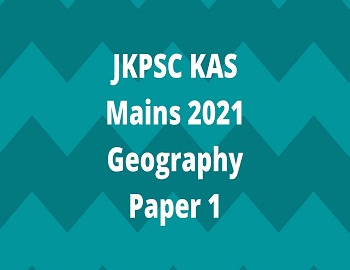


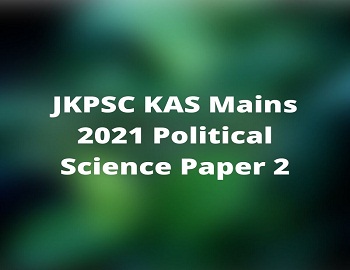
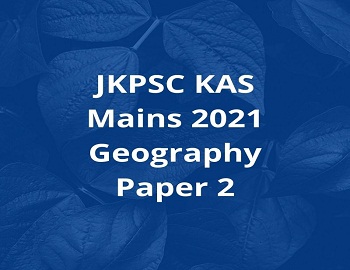
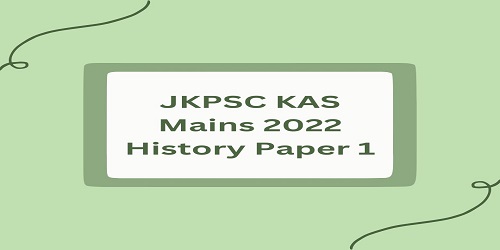
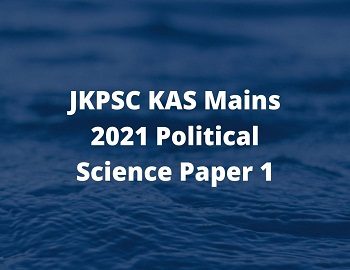


Comments (No)